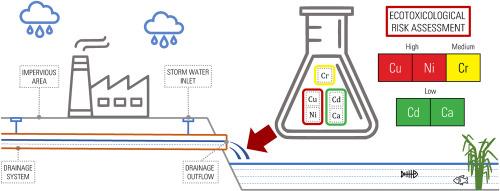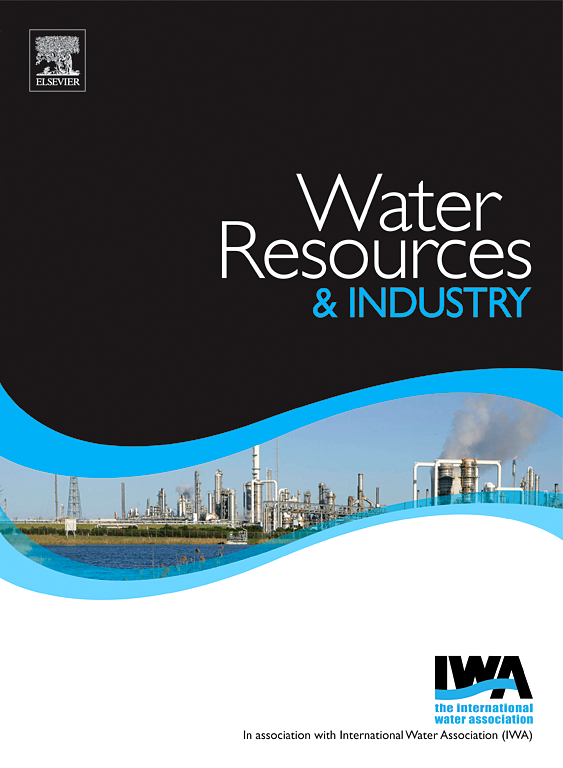波兰工业园区的雨水收集:毒性、处理和使用
IF 7.5
3区 工程技术
Q1 WATER RESOURCES
引用次数: 0
摘要
雨水质量受到工业活动的强烈影响。同时,在水资源日益短缺的情况下,它指出了一种潜在的补充水资源。因此,监控其质量是必不可少的。这是第一批旨在评估工业区(波兰下西里西亚)收集的雨水质量的研究之一,并结合对重金属(HMs)毒性的评估来评估其生态风险。雨水样本从五个地点(排水沟和蓄水池)收集。选定的理化参数(pH、电导率、总悬浮和溶解固体、总磷、BOD5和COD)、离子(Ca、Cl−、SO42−、F−、Al、氮化合物)和选定的HMs (Cu、Ni、Cr、Cd)在认证实验室进行了分析。采用风险商(RQ)法,通过比较最大观测浓度与文献推导的预测无效应浓度(PNEC)来评估生态风险。除Ni(最高0.098毫克/升)和Cl-(最高302毫克/升)外,大多数参数符合世界卫生组织的准则,表明可能受到工业排放的污染。钙离子含量最高,为108 mg/L。雨水pH值相当中性。铜是最常见的重金属(浓度高达0.1 mg/L), RQ值高达2000,表明生态风险高。Cr的生态风险最低。Ni和Cl−浓度的升高表明未经处理的雨水不适合直接回用。为降低风险,建议采取适当的处理措施,如过滤、膜处理或消毒(取决于预期结果)。研究结果强调需要有效的雨水管理和工业活动对环境的影响。本文章由计算机程序翻译,如有差异,请以英文原文为准。

Rainwater harvesting in a Polish industrial park: Toxicity, treatment, and use
Rainwater quality is strongly influenced by industrial activity. Simultaneously, amid increasing water scarcity, it states a potential supplementary water resource. Therefore, monitoring its quality is essential. This is one of the first studies aiming to assess the quality of rainwater collected in an industrial area (in Lower Silesia, Poland), combined with an assessment of heavy metals (HMs) toxicity to evaluate its ecological risk. Rainwater samples were collected from five locations (drainage ditches and retention tanks). Selected physicochemical parameters (pH, electric conductivity, total suspended and dissolved solids, total phosphorus, BOD5, and COD), ions (Ca, Cl−, SO42−, F−, Al, nitrogen compounds), and selected HMs (Cu, Ni, Cr, Cd) were analyzed in a certified laboratory. Ecological risk was assessed using the risk quotient (RQ) method by comparing maximum observed concentrations with literature-derived predicted no-effect concentrations (PNEC). Most parameters met World Health Organization guidelines, except for Ni (up to 0.098 mg/L), and Cl- (up to 302 mg/L), suggesting possible contamination from industrial emissions. Ca was the most abundant cation (108 mg/L). Rainwater pH was rather neutral. Cu was the most prevalent heavy metal (concentrations up to 0.1 mg/L), and RQ values up to 2000, indicating high ecological risk. Cr posed the lowest ecological risk. The elevated Ni, and Cl− concentrations suggest that untreated rainwater is unsuitable for direct reuse. To mitigate risks, appropriate treatment, e.g., filtration, membrane processes, or disinfection (depending on the expected outcomes), is recommended. The findings highlight the need for effective rainwater management and the environmental impact of industrial activities.
求助全文
通过发布文献求助,成功后即可免费获取论文全文。
去求助
来源期刊

Water Resources and Industry
Social Sciences-Geography, Planning and Development
CiteScore
8.10
自引率
5.90%
发文量
23
审稿时长
75 days
期刊介绍:
Water Resources and Industry moves research to innovation by focusing on the role industry plays in the exploitation, management and treatment of water resources. Different industries use radically different water resources in their production processes, while they produce, treat and dispose a wide variety of wastewater qualities. Depending on the geographical location of the facilities, the impact on the local resources will vary, pre-empting the applicability of one single approach. The aims and scope of the journal include: -Industrial water footprint assessment - an evaluation of tools and methodologies -What constitutes good corporate governance and policy and how to evaluate water-related risk -What constitutes good stakeholder collaboration and engagement -New technologies enabling companies to better manage water resources -Integration of water and energy and of water treatment and production processes in industry
 求助内容:
求助内容: 应助结果提醒方式:
应助结果提醒方式:


